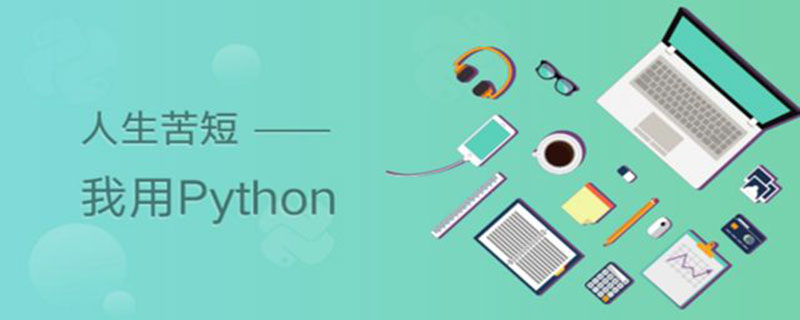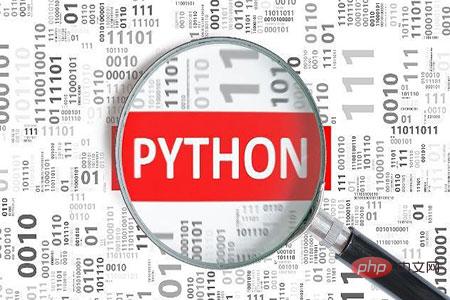Why learn python
Many beginners have heard that python is very popular, but why should they learn Python? Let me talk about my thoughts below.

Python language is the most enjoyable language I have used so far, because it is really beautiful. Although c, c, and java are also very powerful and great, but every Behind the greatness of a language is a certain historical background.
In the PC era, a large number of embedded devices, underlying codes, and desktop applications are all implemented in C and C. There is no doubt that they are the closest to the bottom layer and the fastest
With the large-scale rise of e-commerce around 2000, and the gradual transition from the PC era to the Internet era, java began to return as the king. In addition, with the explosion of mobile Internet in 2010 android began to become popular, java became even more popular.
Then I don’t know which language will dominate the world in the next 10 years, but the next 10 years will definitely be the era of artificial intelligence and the Internet of Everything. Nowadays, AI, VR, driverless cars, and drones , smart homes are getting closer to us.
The next 10 years will be an era of big data and artificial intelligence explosion. There will be a large amount of data to be processed, and the biggest advantage of python is that it has unique advantages in data processing. I believe In the next 10 years, python will become more and more popular

1. From the language rankings
Although Python is 25 It is an uncle-level programming language that is 20 years old, but Python has become more and more popular in recent years. In the TIOBE Programming Language Index ranking, Python's ranking has soared from sixth place last year to fourth place
2. The language itself is concise, beautiful, and super powerful
Python's syntax is very close to English, eliminating the traditional C/Java use of braces to distinguish one In the form of method body or class, forced indentation is used to represent a method or class. The style is unified and very beautiful. It also has many efficient libraries built in. For example, the same work may require 1,000 lines in C language, 100 lines in Java, and only 10 lines in Python. And from desktop applications, web development, and automated testing Operation and maintenance, crawlers, artificial intelligence, and big data processing can all be done. I will talk about it in detail later.
3. Cross-platform
Similar to many popular programming languages Java, C, and C, they can be cross-platform and open source, and the same is true for Python. Because it is open source, Portability is also supported. You can run Python anywhere. In other words, the code you write on window can be easily run on Linux or Mac.
4. Very popular community
Python has a very famous community, and it is very popular. You can go to the python official website to visit frequently, and search on github. Take a look at the python posts. Many open source libraries that you can think of have been developed by others. And the versions are still being iterated.
The above is the detailed content of Why learn python. For more information, please follow other related articles on the PHP Chinese website!

Hot AI Tools

Undresser.AI Undress
AI-powered app for creating realistic nude photos

AI Clothes Remover
Online AI tool for removing clothes from photos.

Undress AI Tool
Undress images for free

Clothoff.io
AI clothes remover

Video Face Swap
Swap faces in any video effortlessly with our completely free AI face swap tool!

Hot Article

Hot Tools

Notepad++7.3.1
Easy-to-use and free code editor

SublimeText3 Chinese version
Chinese version, very easy to use

Zend Studio 13.0.1
Powerful PHP integrated development environment

Dreamweaver CS6
Visual web development tools

SublimeText3 Mac version
God-level code editing software (SublimeText3)

Hot Topics
 1663
1663
 14
14
 1420
1420
 52
52
 1313
1313
 25
25
 1266
1266
 29
29
 1238
1238
 24
24
 Python vs. C : Applications and Use Cases Compared
Apr 12, 2025 am 12:01 AM
Python vs. C : Applications and Use Cases Compared
Apr 12, 2025 am 12:01 AM
Python is suitable for data science, web development and automation tasks, while C is suitable for system programming, game development and embedded systems. Python is known for its simplicity and powerful ecosystem, while C is known for its high performance and underlying control capabilities.
 The 2-Hour Python Plan: A Realistic Approach
Apr 11, 2025 am 12:04 AM
The 2-Hour Python Plan: A Realistic Approach
Apr 11, 2025 am 12:04 AM
You can learn basic programming concepts and skills of Python within 2 hours. 1. Learn variables and data types, 2. Master control flow (conditional statements and loops), 3. Understand the definition and use of functions, 4. Quickly get started with Python programming through simple examples and code snippets.
 Python: Games, GUIs, and More
Apr 13, 2025 am 12:14 AM
Python: Games, GUIs, and More
Apr 13, 2025 am 12:14 AM
Python excels in gaming and GUI development. 1) Game development uses Pygame, providing drawing, audio and other functions, which are suitable for creating 2D games. 2) GUI development can choose Tkinter or PyQt. Tkinter is simple and easy to use, PyQt has rich functions and is suitable for professional development.
 How Much Python Can You Learn in 2 Hours?
Apr 09, 2025 pm 04:33 PM
How Much Python Can You Learn in 2 Hours?
Apr 09, 2025 pm 04:33 PM
You can learn the basics of Python within two hours. 1. Learn variables and data types, 2. Master control structures such as if statements and loops, 3. Understand the definition and use of functions. These will help you start writing simple Python programs.
 Python vs. C : Learning Curves and Ease of Use
Apr 19, 2025 am 12:20 AM
Python vs. C : Learning Curves and Ease of Use
Apr 19, 2025 am 12:20 AM
Python is easier to learn and use, while C is more powerful but complex. 1. Python syntax is concise and suitable for beginners. Dynamic typing and automatic memory management make it easy to use, but may cause runtime errors. 2.C provides low-level control and advanced features, suitable for high-performance applications, but has a high learning threshold and requires manual memory and type safety management.
 Python and Time: Making the Most of Your Study Time
Apr 14, 2025 am 12:02 AM
Python and Time: Making the Most of Your Study Time
Apr 14, 2025 am 12:02 AM
To maximize the efficiency of learning Python in a limited time, you can use Python's datetime, time, and schedule modules. 1. The datetime module is used to record and plan learning time. 2. The time module helps to set study and rest time. 3. The schedule module automatically arranges weekly learning tasks.
 Python: Exploring Its Primary Applications
Apr 10, 2025 am 09:41 AM
Python: Exploring Its Primary Applications
Apr 10, 2025 am 09:41 AM
Python is widely used in the fields of web development, data science, machine learning, automation and scripting. 1) In web development, Django and Flask frameworks simplify the development process. 2) In the fields of data science and machine learning, NumPy, Pandas, Scikit-learn and TensorFlow libraries provide strong support. 3) In terms of automation and scripting, Python is suitable for tasks such as automated testing and system management.
 Python: Automation, Scripting, and Task Management
Apr 16, 2025 am 12:14 AM
Python: Automation, Scripting, and Task Management
Apr 16, 2025 am 12:14 AM
Python excels in automation, scripting, and task management. 1) Automation: File backup is realized through standard libraries such as os and shutil. 2) Script writing: Use the psutil library to monitor system resources. 3) Task management: Use the schedule library to schedule tasks. Python's ease of use and rich library support makes it the preferred tool in these areas.




